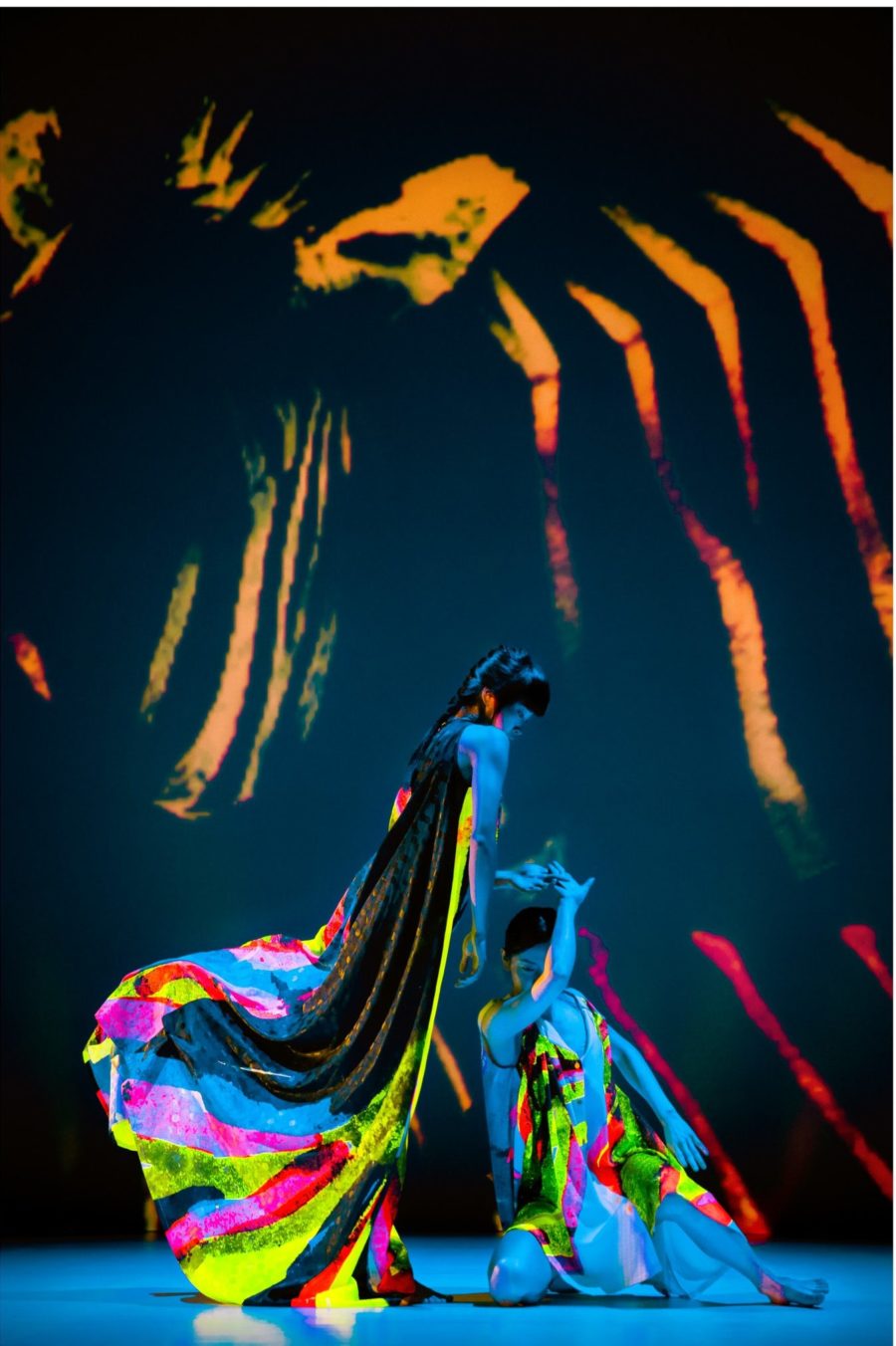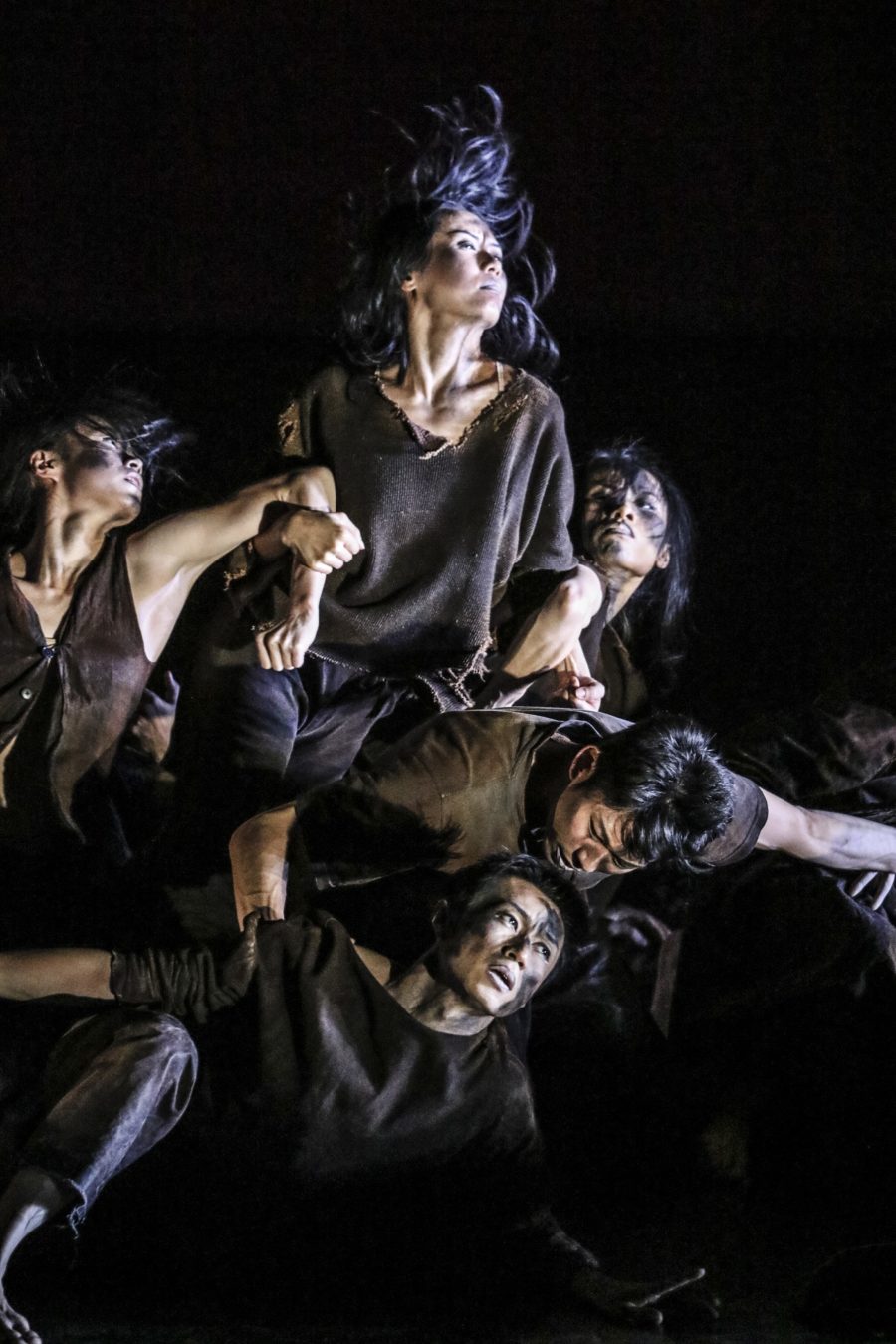Cloud Gate Dance Theatre of Taiwan has been one of my favourite dance companies for their bold visual and narrative approach to presenting their unique blend of contemporary dance, martial arts and ballet. I can still vividly remember the awe I felt when I first saw this company led by choreographer and artistic director Lin Hwai-min, the man who founded the Cloud Gate in 1973. His visual innovation has seen their dancers performing on mirrors covered with water, balancing off bamboo and surrounded by a large black roll of silk falling from the ceiling onto the stage and latterly high tech digital backdrops.
So there’s always a sense of excitement when the company comes to London, and their latest programme is an important one as it presents a piece from Lin Hwai-min who is retiring as artistic director and a piece from the incoming artistic director Cheng Tsung-Lung, giving us an insight into the future artistic vision for Cloud Gate under this new leadership.
Cheng’s 13 Tongues was presented first and I have to admit that I arrived late (thanks for London traffic!) so missed the first 10 minutes or so which may have had an impact on the cohesiveness of the stories from his childhood selling slippers on the side of the road. What was supposed to represent some of his memories from Taipei’s oldest district mixed with ‘the fantastical tales of a storyteller’, came across as a confused and conflicting short visual scenes, ranging from a bright neon mystical floating woman in a luminous dress, to a dark screaming angry man ranging with frustration.

The movement seemed to be disjointed from any of the musical elements and the visual projections that included a huge swimming goldfish and a garish abstract painting moving landscape, that set the scene for a unsatisfying neon-drenched rave with the dancers jumping and flailing around in a long end to a strange piece that seemed to hide the quality of the dancers and their trademark physical style in darkness and costumes.
Lin’s Dust by contrast immediately created a distinct atmospheric scene through simple but effective use of soft light and smoke that crept across the stage with a sense of foreboding as we are immersed in the destruction of Dresden during the war. It was pleasing to see that the choreography and the dancers’ movement was central to the piece, honouring the company’s artistry and versatility. Lin’s choice of music was haunting as the dancers bodies expressed a fear that resonated across the theatre through the dancers’ extraordinary acting ability.

The small movements of lifting their hands to the air, shielding their faces, huddling together was deeply moving, but it was the moments where Lin brought the dancers together seated in a row, arm in arm, with a square of yellow light illuminating their slow movements and bursts of anguished and distress that was truly compelling. It’s a stunning and emotional piece, and it’s interesting that Lin chose the subject of war and destruction, the pain of the individual and the collective, as his farewell for London that firmly marks the end of Lin’s reign with a piece that will be added to my memories Cloud Gate.
Reviewed on 26th of February at Sadler’s Wells


